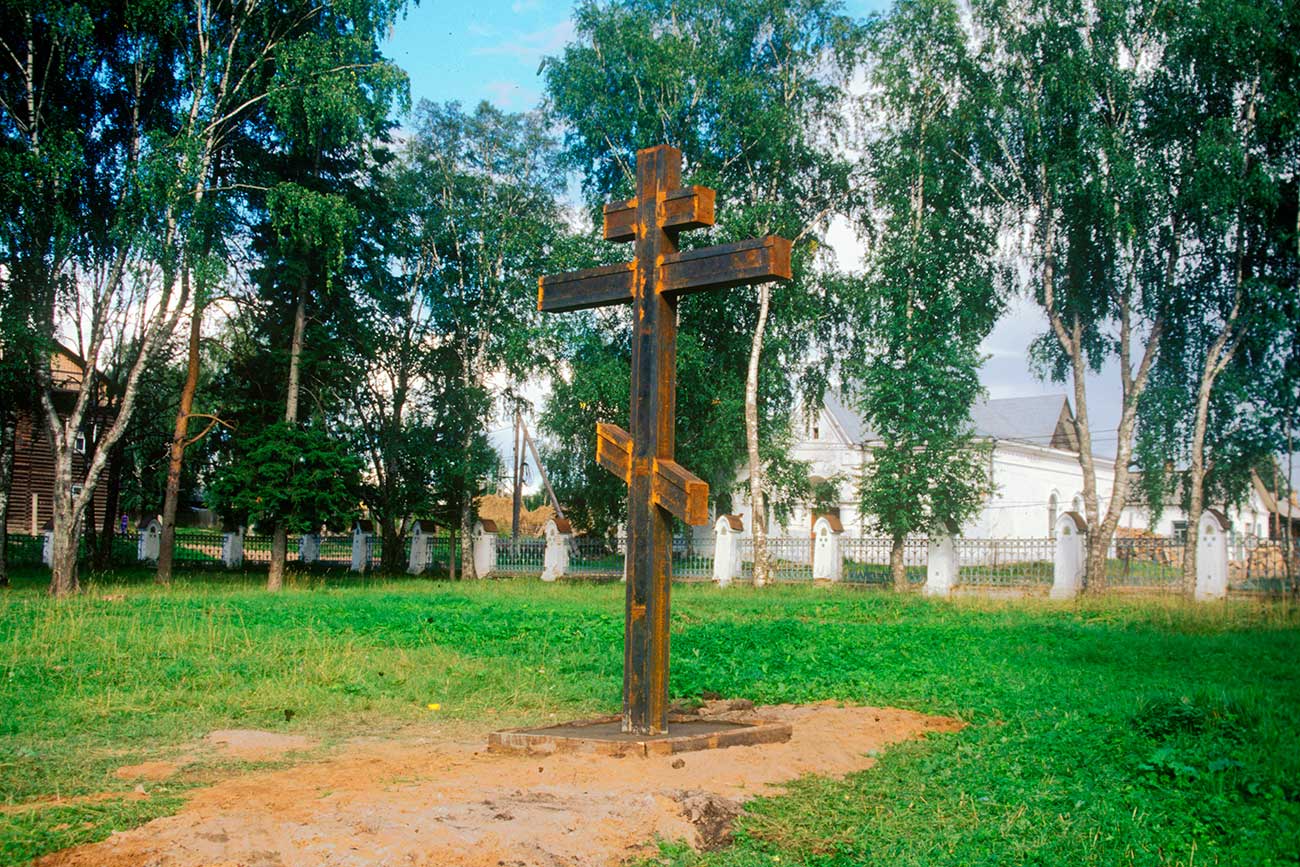
Nyrob. Memorial cross on site of shrine to Mikhail Nikitich Romanov. Photo: August, 2000ю
William Brumfield Nyrob. Memorial cross on site of shrine to Mikhail Nikitich Romanov. Photo: August, 2000 / William Brumfield
Nyrob. Memorial cross on site of shrine to Mikhail Nikitich Romanov. Photo: August, 2000 / William Brumfield
At the beginning of the 20th century, the Russian chemist and photographer Sergei Prokudin-Gorsky invented a complex process for vivid, detailed color photography (see box text below). His vision of photography as a form of education and enlightenment was demonstrated with special clarity through his photographs of architectural monuments in the historic sites throughout the Russian heartland.
Prokudin-Gorsky's visit to the Northern Urals, which presumably took place in the spring of 1913 in connection with the 300th anniversary of the Romanov dynasty, included the small settlement of Nyrob, located about 25 miles to the north of the regional center of Cherdyn. Referred to in written sources as early as 1579, isolated Nyrob became a place of tsarist punishment shortly after its founding at the turn of the 17th century.
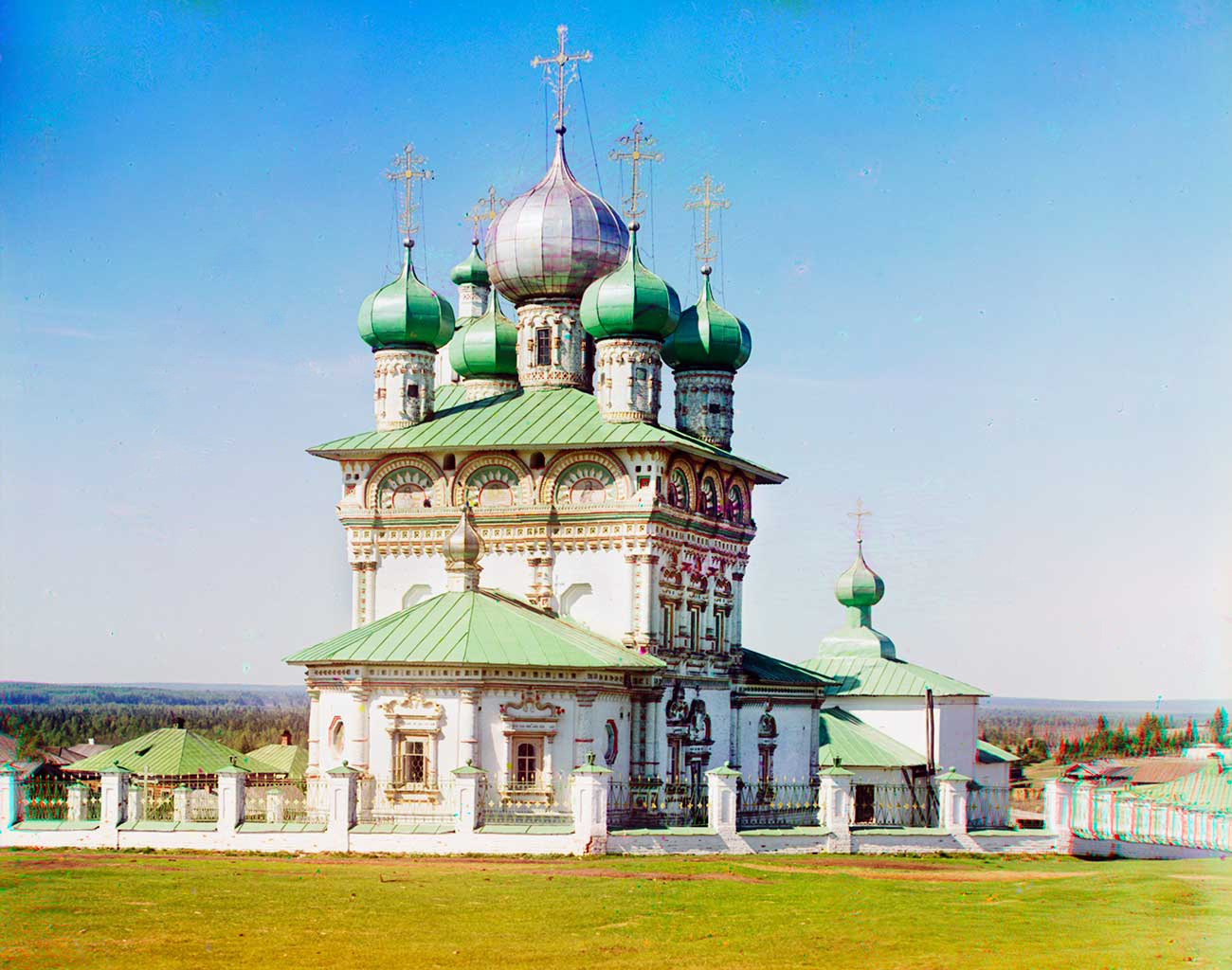 Nyrob. Church of St. Nicholas, northeast view. Photo: 1913 / Sergei Prokudin-Gorsky
Nyrob. Church of St. Nicholas, northeast view. Photo: 1913 / Sergei Prokudin-Gorsky
It was here in 1601 that Tsar Boris Godunov exiled the boyar Mikhail Nikitich Romanov, whose aunt was Anastasia, the much beloved first wife of Ivan the Terrible. The ambitious Godunov had reasons for concern about his own unsteady claims on the Muscovite throne after the end of the Riurikovich dynasty in 1598. To eliminate a strong potential rival, Godunov subjected Mikhail Nikitich to harsh treatment in Nyrob. Kept in fetters and thrown into a deep pit, Mikhail died the following year.
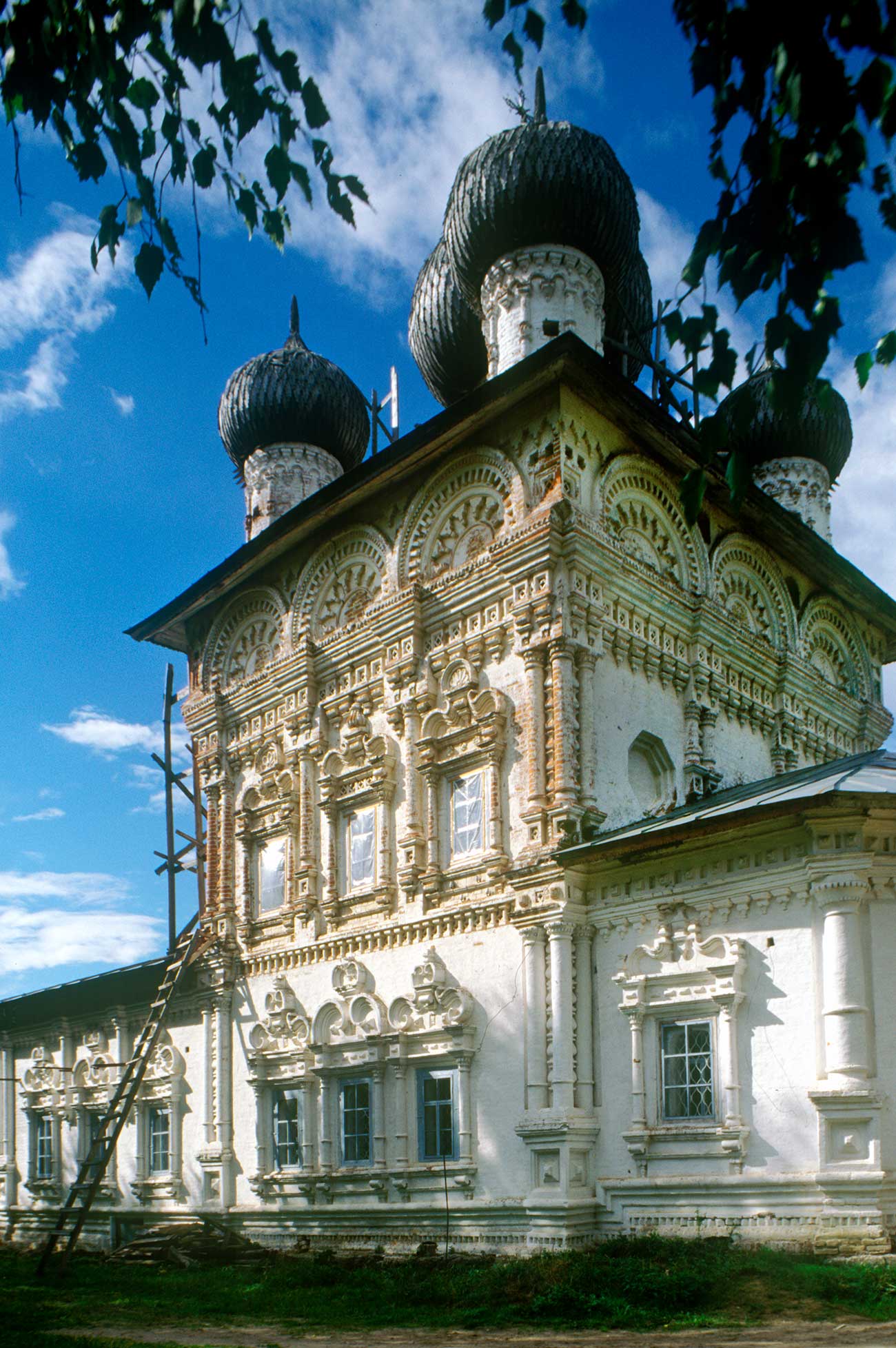 Church of St. Nicholas, southeast view. Photo: August, 2000. / William Brumfield
Church of St. Nicholas, southeast view. Photo: August, 2000. / William Brumfield
Godunov's own days, however, also were numbered, and after his death in 1605, Russia was plunged into a devastating dynastic crisis known as the "Time of Troubles." Although its consequences lingered for decades, that crisis formally ended in 1613 with the accession to the throne of Mikhail Fedorovich Romanov, nephew of Mikhail Nikitich and son of Fedor Nikitich Romanov, who led the Russian Orthodox Church as Metropolitan (subsequently Patriarch) Filaret.
Nyrob thus gained impressive claims as a significant place in the sacralization of the Romanov ascent to dynastic authority. After the founding of the Romanov dynasty, the site of Mikhail Nikitich’s death was commemorated by two log churches dedicated to the Epiphany and to St. Nicholas. The log Church of St. Nicholas was built near the original burial place of Mikhail Nikitich almost immediately after the establishment of the dynasty in 1613.
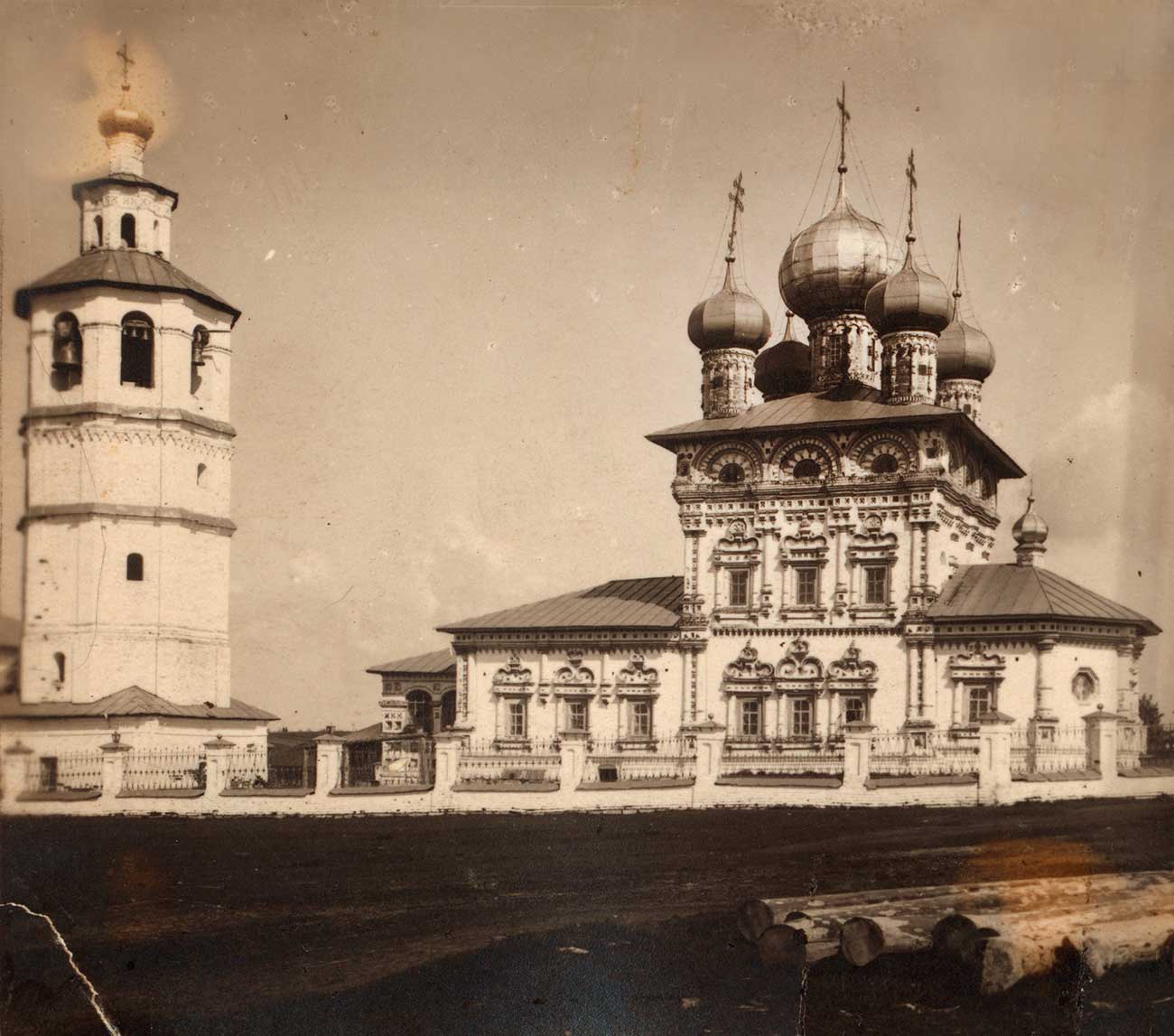 Church of St. Nicholas & bell tower, south view. Photo: 1913 / Sergei Prokudin-Gorsky
Church of St. Nicholas & bell tower, south view. Photo: 1913 / Sergei Prokudin-Gorsky
At the beginning of the 18th century, the log churches were replaced with two masonry churches: the Church of St. Nicholas (1704-05) was an unheated structure used for worship in the summer; and the adjacent, more modest Church of the Epiphany (1736), was used for winter worship. The church ensemble was joined by a tall octagonal bell tower (demolished in 1934).
The interiors of both churches soon were painted. The Epiphany Church, which held the original casket of Mikhail Nikitich Romanov, was particularly richly decorated. All this work still existed at the time of Prokudin-Gorsky’s visit. His photographs are an invaluable record, particularly since most components of the Romanov memorial, including the Epiphany Church interior, were destroyed during the Soviet period.
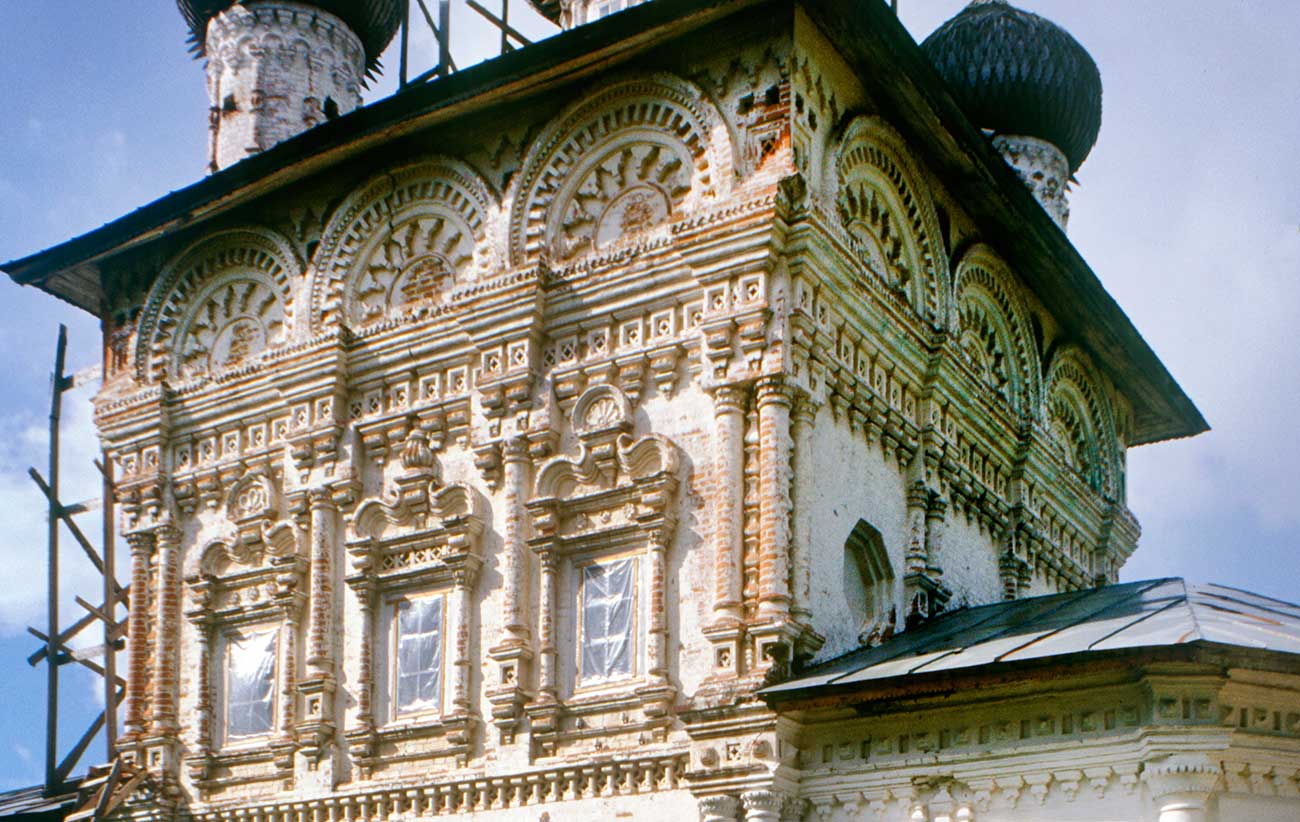 Church of St. Nicholas, upper tier, southeast view. Photo: August, 2000 / William Brumfield
Church of St. Nicholas, upper tier, southeast view. Photo: August, 2000 / William Brumfield
Fortunately, the distinctive structure of the Church of St. Nicholas survived, as seen in my photographs of August 2000. The church’s rich façade ornamentation — from the window surrounds and the arcaded cornice to the drums beneath the onion cupolas — are unusual even by Russian standards. As a crowning touch, the shingles of the wooden cupolas contribute to the play of texture and shadow on the surface of this remarkable temple.
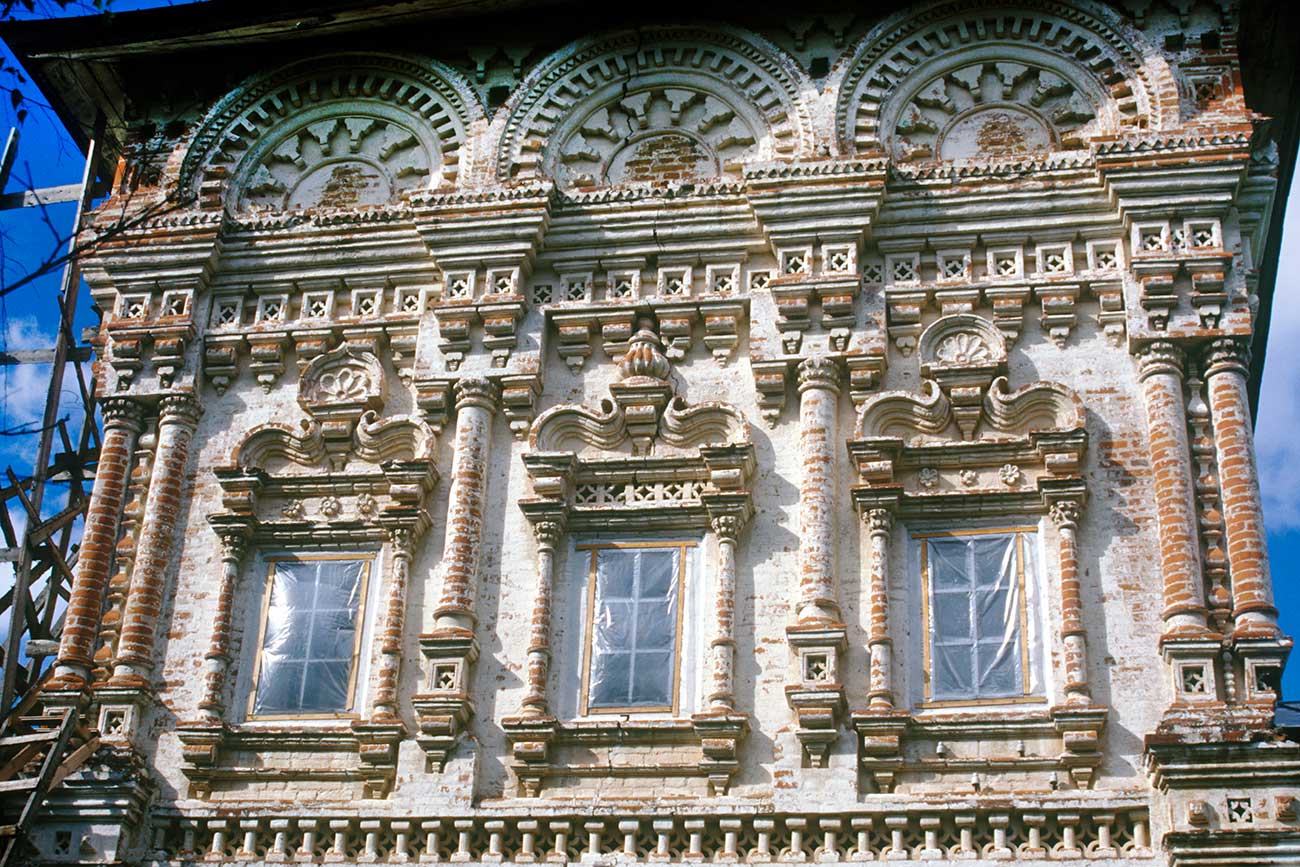 Church of St. Nicholas, south facade, upper level, decorative details. Photo: August, 2000 / William Brumfield
Church of St. Nicholas, south facade, upper level, decorative details. Photo: August, 2000 / William Brumfield
The church ensemble was only one part of the Romanov memorial complex. A wooden chapel erected on the site of the pit in the early 17th century was rebuilt in brick in 1793 by order of Empress Catherine the Great with support provided by the wealthy peasant Mikhail Ponomarev. In Prokudin-Gorsky’s photographs, the chapel is obscured by foliage and enclosed within a dilapidated masonry and iron fence.
On the occasion of the Romanov Tercentenary in 1913, the chapel territory was greatly expanded to form a park square enclosed within an elegant fence designed in the style moderne by the Perm artist Alexey Zelinin (1870-1944), That fence, whose construction lasted from 1913 to 1915, did not yet exist at the time of Prokudin-Gorsky’s visit.
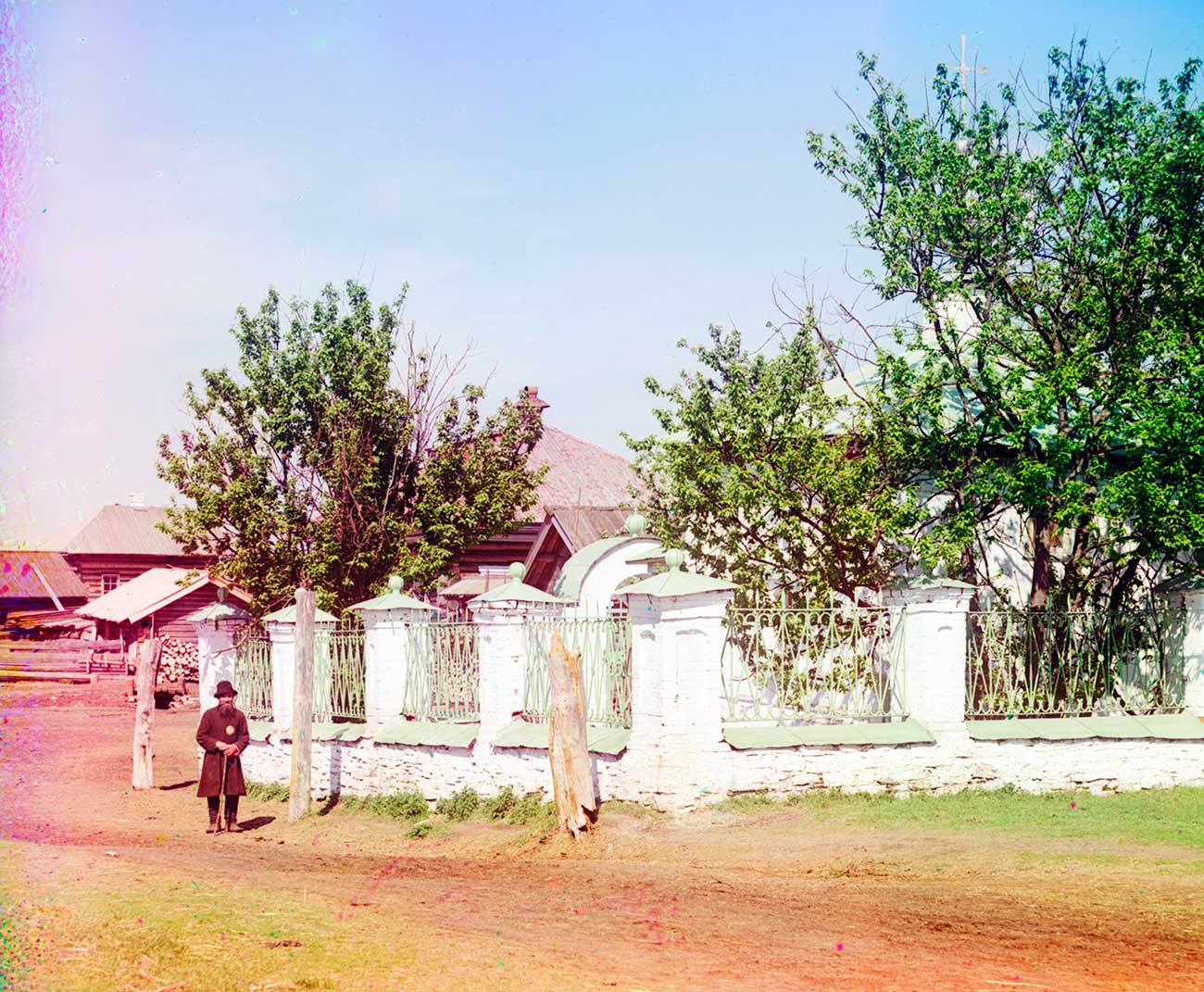 Fence around Chapel of Archangel Michael (shrine to Mikhail Nikitich Romanov). Photo: 1913 / Sergei Prokudin-Gorsky
Fence around Chapel of Archangel Michael (shrine to Mikhail Nikitich Romanov). Photo: 1913 / Sergei Prokudin-Gorsky
The memorial chapel, also renovated in 1913, was destroyed in 1932. The fence, however, survived with its ceramic tiles, as seen in my photograph. In 2001, an octagonal pavilion-chapel was erected at the site of the cross that I photographed in 2000. In 2012, a handsome chapel in the form of the earlier brick chapel was consecrated on the site.
Remote Nyrob has once again become a pilgrimage shrine, and the Prokudin-Gorsky photographs have played an inestimable role in preserving this memory of the Romanovs.
 Fence with ornamental ceramics placed around shrine to Mikhail Nikitich Romanov in honor of Romanov Tercentenary (1913). Photo: August, 2000 / William Brumfield
Fence with ornamental ceramics placed around shrine to Mikhail Nikitich Romanov in honor of Romanov Tercentenary (1913). Photo: August, 2000 / William Brumfield
If using any of Russia Beyond's content, partly or in full, always provide an active hyperlink to the original material.
Subscribe
to our newsletter!
Get the week's best stories straight to your inbox